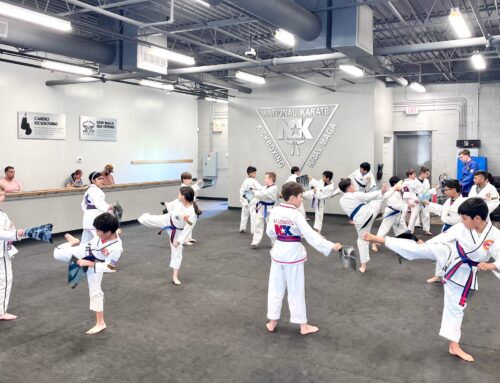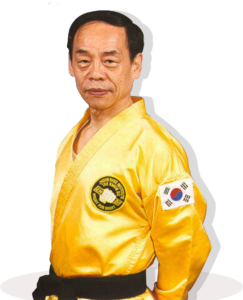
Grand Master Rhee (1932-2018) the Father of American Tae Kwon Do & the first in the National Karate lineage.

Master Rhee even starred in a few movies
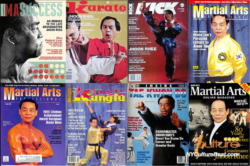
A few of the magazine covers that featured Master Rhee
In the vibrant tapestry of American martial arts history, one name stands out as a pioneering force: Grand Master Jhoon Rhee who is affectionately known as the “Father of American Tae Kwon Do” because he was the first person to bring Tae Kwon Do to America. Master Rhee stands as the root of the National Karate family tree and his legacy extends beyond his accomplishments as a martial artist; he is remembered as a teacher, innovator, entrepreneur, and charity advocate who helped to introduce and promote Taekwondo in the United States and beyond.
Jhoon Rhee’s journey from Korea to the United States embodies the quintessential American dream, and his legacy reverberates through the corridors of martial arts schools nationwide, particularly within the esteemed National Karate family.
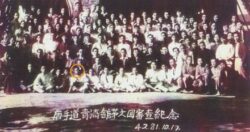
The young Jhoon Rhee circled here in Grandmaster Won Kook Lee’s Tae Kwon Do program
Jhoon Rhee’s story begins in Korea in 1932, amidst the tumultuous backdrop of Japanese occupation during World War II. It was during this period that Rhee embarked on his martial arts journey, initially studying Shotokan karate. During Japanese rule, traditional Korean martial arts, like almost all aspects of Korean identity, had been banned. When the war ended Korean martial arts schools began to open. Jhoon Rhee started training in one of these schools and the emergence of Tae Kwon Do in post-war Korea that captured his imagination and set him on a path that would forever change the landscape of martial arts in America.
The roots of Tae Kwon Do trace back to Grandmaster Won Kook Lee, who founded one of the first Tae Kwon Do schools, blending traditional Korean martial arts with innovative combat techniques, self-defense, sport, and exercise. Rhee, a young and talented practitioner, quickly excelled in this new discipline, laying the groundwork for his future endeavors.
Driven by an indomitable spirit and a visionary mindset, Rhee set his sights on America, inspired by the allure of the silver screen and the promise of the American dream. Armed with his passion for Tae Kwon Do and a determination to succeed, he saw an opportunity to introduce this ancient art to a new audience and make a living as an instructor in his adopted homeland.
Coming to America:
Rhee’s journey to America began through a joint training program with the South Korean and United States military, eventually leading him to the Gary Air Force Base in San Marcos, Texas. He later enrolled at San Marcos Southwest State College and started a little “Karate Club”. As Mr. Rhee’s students became Black Belts, the little known sport of martial arts begins to grow.
Under Rhee’s tutelage, Texas blossomed into a hub of martial arts excellence, earning the moniker of “Tex Kwon Do” for its distinctive style characterized by its robust and hard-hitting approach. Renowned figures such as John Worley, Larry Carnahan, and movie star Chuck Norris honed their skills under Rhee’s guidance, propelling the growth of martial arts across the country.
In 1959, Rhee transitioned to Washington D.C., where he founded the Jhoon Rhee Institute, a professional chain of martial arts schools that would become synonymous with excellence and innovation. Mr. Rhee enticed top instructors from Texas like John & Pat Worley and Larry Carnahan and several others to relocate to Washington D.C. to pursue their dream of teaching martial arts for a living.
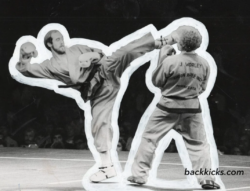
Pat & John Worley of Jhoon Rhee Institute sparring with new invention of Hand & Foot Pads
The Invention of Sparring Gear:
Jhoon Rhee not only built a prosperous martial arts business but also revolutionized the industry with his inventions, including the first line of martial arts protective gear. One incident in particular inspired Rhee; at a 1969 championship tournament, he saw one of his students take a hard kick in the face, breaking his cheekbone. That student was Pat Worley (John Worley’s brother). Rhee became determined to do something to reduce the frequency and severity of martial-arts-related injuries. The result was Jhoon Rhee Safe-T equipment, protective gear that covers the hands, feet and head, allowing full-contact training and competition without the risk of serious injury. No one in martial arts had worn safety gear before Mr. Rhee invented it.
The Invention of Musical Form:
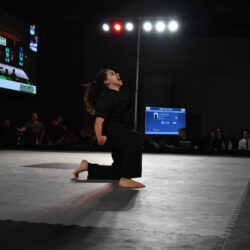
Haley Glass performing musical form
Beyond his entrepreneurial ventures, Rhee was a visionary who sought to infuse philosophy and artistry into the practice of Tae Kwon Do. He pioneered the concept of “martial arts ballet”, blending choreographed movements with classical music. As a lover of dance and music, and someone who believed that the human form is the greatest of all works of art, Rhee wondered what it would be like to add music to the choreographed body movements of Tae Kwon Do, similar to the way that music is used in Olympic skating, and gymnastic floor exercise routines. Rhee choreographed several forms in ballet style, based on Tae Kwon Do moves, and set them to classical music, including Beethoven’s Fifth Symphony and the theme from Exodus. The result of Rhee’s invention is what he called “martial arts ballet” and it became the foundation for the musical forms competitions that are now performed at tournaments all over the world. (Master Rhee’s form “Exodus” and “Beethoven” are still used by some in National Karate today. Master Nelson and Master Mazzola were required to perform Master Rhee’s musical from “Exodus” when they tested for first Degree Black Belt in 1987 and 1997 respectively.)
Philosophy: “Might for Right!”
Jhoon Rhee believed that martial arts without philosophy was just “street-fighting”. His philosophy was that strength and power should be utilized for righteous and just purposes. In the context of martial arts, it emphasizes using one’s skills and abilities not for aggression or dominance but for the defense of oneself and others, as well as for upholding moral principles and values. He coined the phrase “Might for Right” to encapsulate this philosophy in a way that would be easy to teach and repeat.
The Jhoon Rhee schools would shout “Might for Right” at the end of every lesson to remind its students to go out into the world and use their “might” or martial arts skills for the “right” reasons. For self-defense and to fight for justice. In fact, the National Karate Schools still shout “Might for Right” at the close of every class even today.
Bruce Lee:
Jhoon Rhee’s relationship with Bruce Lee began in 1964, when they met at the late Grandmaster Ed Parker’s International Karate Championships in Long Beach, California. Rhee was 32 years old; Lee, 23. Both men performed demonstrations, and each was impressed with the other’s skill. They started a friendship, regularly visiting each other and exchanging letters for nearly a decade until Lee’s untimely death.
Muhammad Ali:
Mr. Rhee first met Muhammad Ali in 1975, before his “Thrilla in Manila” championship fight with Joe Frazier. Ali was fascinated with the Martial Arts and always wanted to meet Bruce Lee but never had the chance. Rhee knew that Ali and Bruce Lee never had the chance to meet, so he took the opportunity to show Ali a punch that Rhee had learned from Lee, and for which Rhee had coined the name: the “Accupunch.” An extraordinarily fast punch that is almost impossible to block, the Accupunch is based on human reaction time—the idea is to finish the execution of the punch before the opponent can react. When Rhee demonstrated the punch to Ali, Ali was unable to block it.
At Ali’s request, Rhee taught him the punch, which he used in his fight against Frazier. Later, Ali also used the Accupunch in a bout with the British champion Richard Dunn—for a knockout blow.
 Congressional Tae Kwon Do Club:
Congressional Tae Kwon Do Club:
Chuck Norris, Bruce Lee, and Mohammad Ali were not the only high-profile people to come into Rhee’s circle. In 1965, Rhee read a newspaper account of how Congressman James Cleveland of New Hampshire had been mugged near Capitol Hill. Rhee immediately called Cleveland’s office to say that he had a Tae Kwon Do school in DC and would like to teach the representative martial arts for self-defense. When Cleveland called back the next day, asking about schedule and tuition, Rhee offered to teach him for free, even saying he would go to the Hill to save the representative’s valuable time. Cleveland appreciated the offer so much that he told Rhee he would ask a few of his colleagues if they might also be interested in training so that they could form a class on the Hill. And so began Rhee’s U.S. Congressional Tae Kwon Do Club.
The Club’s first class was held in the House members’ gymnasium on May 6, 1965; since then, more than 350 members of Congress have attended classes—19 even earned black belts.
100,000 Black Belts!
It is estimated that Master Rhee’s students have promoted over 100,000 students to Black Belt in the last 60 years and National Karate itself makes up 15,000 of those Black Belts. Today, hundreds of Tae Kwon Do studios in the U.S. and around the world use the Jhoon Rhee curriculum.
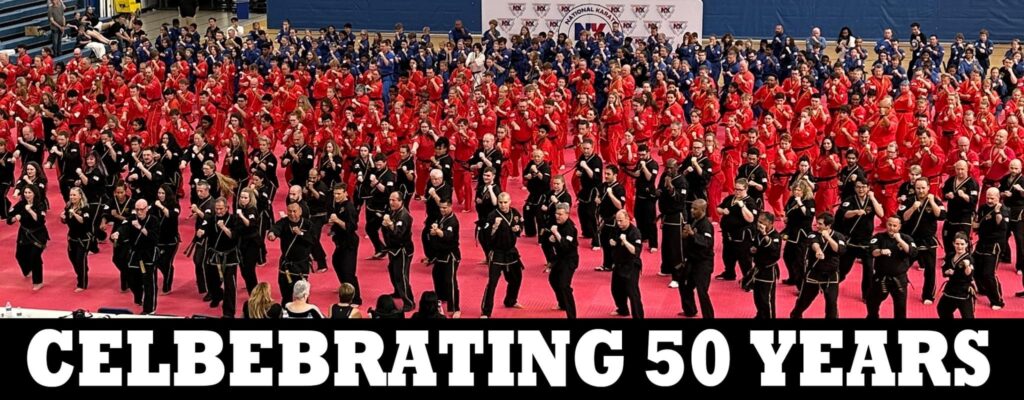
National Karate’s 50th Anniversary Celebration. Over the past 50 years, NK has graduated 15,000 Black Belts
Grand Master Jhoon Rhee Other Accomplishments:
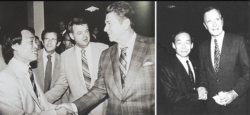
Master Rhee with Presidents Reagan and President Bush
Listed below are just a few of his many other accomplishments.
- Appointed to the National Council on Vocational Education (1984 – 1988) by President Ronald Reagan.
- Appointed as Special Advisor to the President’s Council on Physical Fitness & Sports (1988 – 1991) by President George H. W. Bush.
- Named National Chairman of the Nation’s Birthday Celebration on July 4th, 1983.
- Creator of National Teacher Appreciation Day, January 28, 1986, which was signed by President Ronald Reagan on October 16, 1986.
- Selected as the 721st “Daily Point of Light” by President George Bush on March 17, 1992.
- Received the American Immigrants Achievement Award on March 19, 1999.
- Received the National Association of Professional Martial Artists Lifetime Achievement Award on June 10, 1999.
- In January 2000, became the only Korean American to be named one of the 203 most recognized American immigrants by the National Immigrant Forum and the U.S. I.N.S., a list that includes Albert Einstein and Alexander Graham Bell.
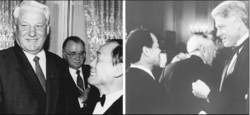
Master Rhee with Russian President Yeltsin and President Clinton
As we reflect on the remarkable journey of Grand Master Jhoon Rhee, we celebrate not only his contributions to martial arts but also his embodiment of the American dream—a testament to the transformative power of passion, perseverance, and the pursuit of excellence.
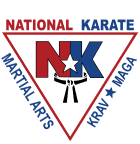
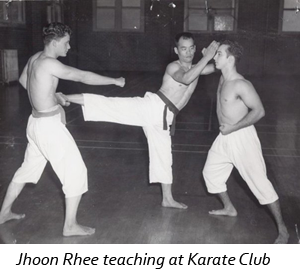
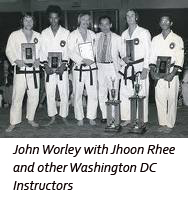

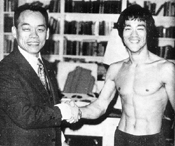
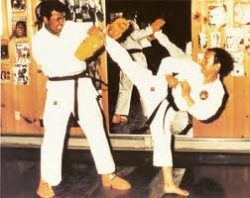
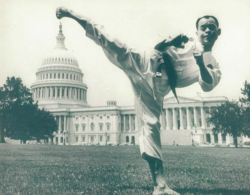 Congressional Tae Kwon Do Club:
Congressional Tae Kwon Do Club: